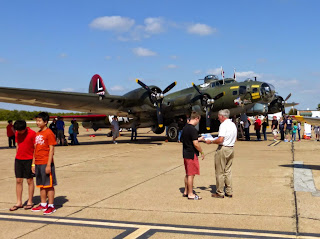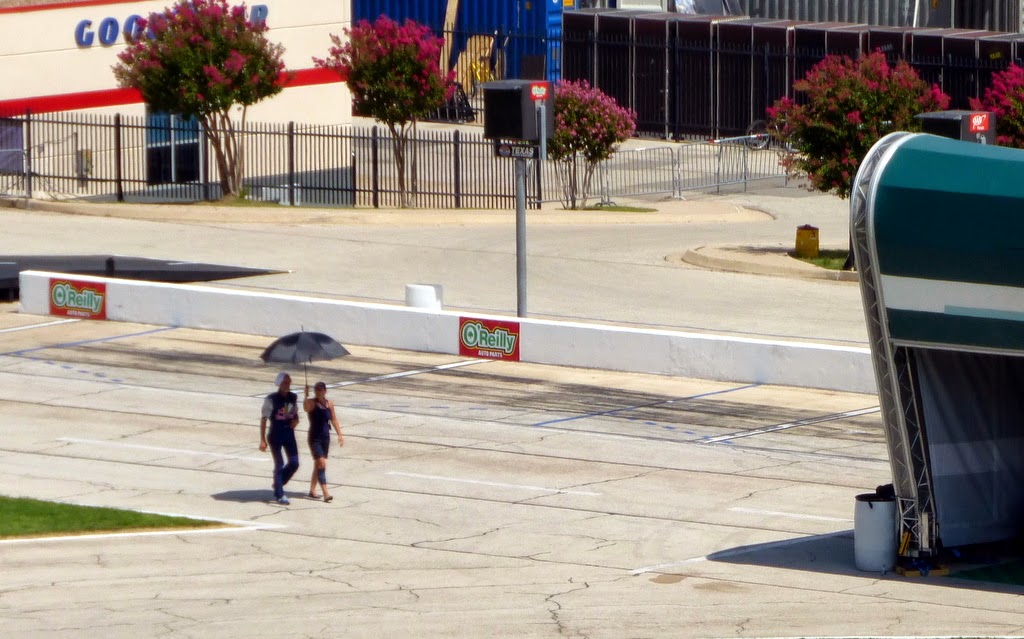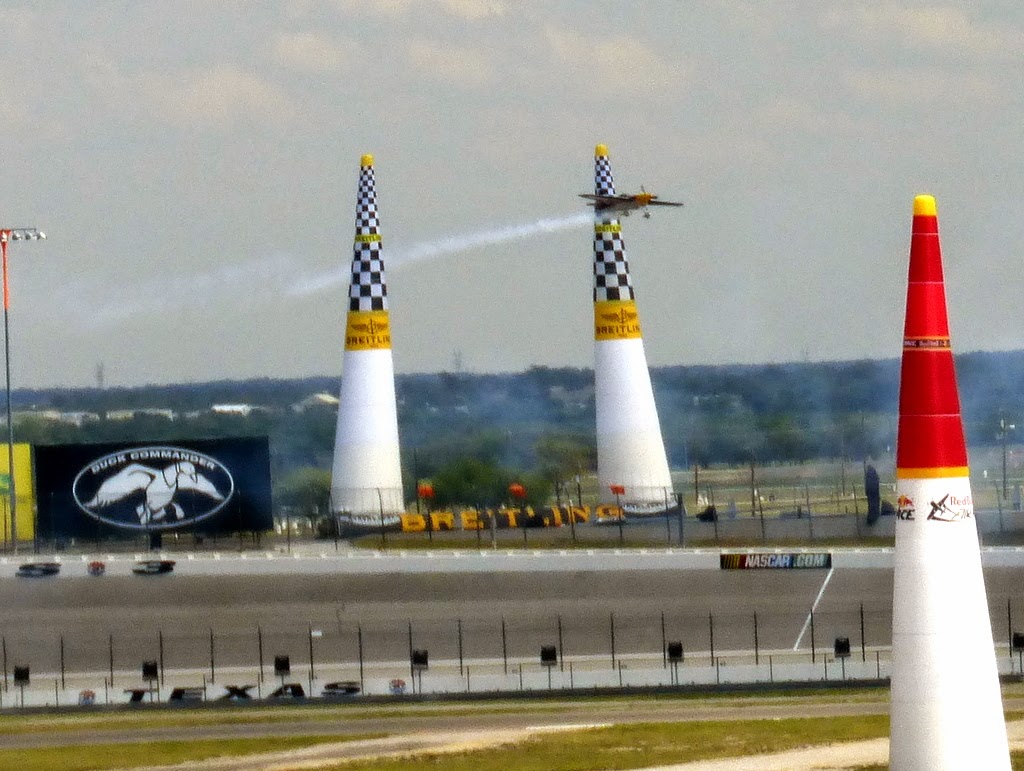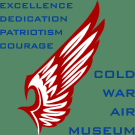If there is group even more dedicated to the History of Aviation than the Pilots, Mechanics, Volunteers and Sponsors that keep our Birds flying, it may be the Aviation Photographers. These dedicated people spread the story and keep Aviation History alive through pictures and prose. Our reach to these twenty plus photographers will be multiplied by thousands, or hundreds of thousands by the time their pictures are published, posted or viewed.
On May 23rd, the Cold War Air Museum (CWAM) had the privilege and pleasure of such a group visiting for a sponsored event and dinner. They will have their own event posted on their web sites (along with much better photographs taken with much more expensive equipment). But it was a pleasure to watch them at work, even in the rain and catch a few quick photos of the photo takers with my trusty smart phone.
Event planning and co-ordination with Airport management allowed them limited, but close up access for some special picture taking. That is an advantage of an airport and aviation history oriented community such as ours. The only element not fully on board with today’s events was the weather.
The "Cavanaugh Caribou Came to CWAM" for the Photographer's Pictographic Pleasure. Making the 20 mile trip from the North to the South of the DFW Metroplex seemed as if it might not happen with Torrential rain and Tornadic Winds passing through the area earlier. Our thanks to the Cavanaugh Museum for helping to "make the day" for these Hunters of History.
Towards the end of the day, the Mi24 returned from the nearby State of Oklahoma. Weather had not been kind to the planned trip or event but the Bird and it's Crew made a safe return with another photo-op for the group.
With the photographers getting their pics and the crew getting the Bird safely put away before yet another storm passed through, the event ended successfully with a dinner for the group at the museum.
Sunday, May 24, 2015
Sunday, October 5, 2014
CWAM visits the CAF WWII Air Expo - Dallas
Several of the Cold War Area Museum Directors are also Life Members of the Commemorative Air Force (CAF) and several of the CJ's from the CWAM group flew to the event.
In addition to the many aircraft we are used to seeing, others flew in, to help attract attention and support for the creation of a new area aviation museum and headquarters for the CAF.
These CAF aircraft, based in this, and other areas, have all been beautifully restored and maintained. If the new facility is built, some will base here and others may come for display on a rotating basis.
Families came and children got to see and touch a part of history that their grandparents (or great-grandparents) may have been part of. Rides were also available in many of the planes. All of the aircraft on display were flown to the event.
The centerpiece for the event was Fifi, currently the only fully restored and flying B29 in the world.
Our hat is off as always to Charlie Wood, who has helped co-ordinate so many joint events for the CAF and Cold War Air Museum at Lancaster. Now a National Officer for the Commemorative Air Force, Charlie was, as usual, actively recruiting new members in support of keeping these wonderful machines on display and flying.
If all that is being discussed comes to pass, Dallas Executive Airport, a few miles from where the CAF/DFW and CWAM museums are currently located may gain a new facility, a home for permanent and rotating display of these fine historic aircraft.
Director Boede and several volunteers took time out to contemplate the event.
And to contemplate as well, the changing times and changing trends in acceptable nose art.
Sunday, September 7, 2014
Red Bull Air Races
A couple of CWAM associates had the pleasure of attending and reporting back on the Red Bull Air Race event held in our area this weekend. Pictures are from Saturday, when training and Challanger class events were held. Between the Challanger and Master Class events, it appeared teams were competing from about 17 different countries from around the world.
During the Cold War, air shows and "civilian" air race competitions were an opportunity for national interests to be displayed in a highly competitive atmosphere, sans weapons. In contrast to that era, all of these teams appear supported by commercial, not national, interests. But it is still fun for the spectators to root for their home teams.
The Texas Motor Speedway is a unique venue for this event. The Speedway normally hosts NASCAR automotive races and was built "Texas sized" to reflect the public interest and following of those events. The speedway is capable of seating and supporting more than 128,000 visitors. And a hotel provides spectacular views of race events. The extensive parking area is filled with buses, motor homes and campers on multi-day events.
The entire course is visible from the speedway stands. Take offs and landings were also from within the stadium, puting all of the action in direct view of the spectators.
After parking their aircraft, pilots exhausted by the Texas heat and G forces may go to press or conference rooms for interviews, or back to the pits for debriefing.
During the event, spectators could watch the planes flying in front of them or watch the action on a giant screen across the field. The screen switched between cameras inside the aircraft, views from cameras mounted on the aircraft and views from cameras in the stadium and a helicopter above. The display also showed times, speeds and rankings of the aircraft/pilots. The bright flash of Texas sun shown on the big screen behind the pilots head is a reminder of another obstacle the pilots faced during the race.
Entry through the checkered pylon gates was followed by an immediate turn to the left towards the first red pylon. Aircraft had to make entry under 200 knots, most entered on a slight decent to add speed after entry.
Clipping a pylon adds a time penalty. The top of the checkered entry pylon can just be seen behind this aircraft's tail as the pylon begins to collapse. Crews on the ground could repair and re-inflate a pylon in a matter of minutes.
The course is short and fast. After passing the first red pylon the aircraft passes in front of the stands. The jumbo display in this shot is showing a slightly out of sync view from a camera mounted on the aircraft's tail. The speed of action is intense and you can watch the moving plane or the stationary screen, but not both at the same time. The slight lag in attitude shown on screen, compared to the aircraft in flight, was only noticeable looking at this shot after the fact.
Continuing down course, the aircraft goes vertical to reverse direction. In this shot, the right pylon of this pair was hit on the first Lap and is laying on the ground. Between heats, a crew repaired and re-inflated it in about two minutes. The spectators lining the hotel top floor balcony must have a great view.
During the Cold War, air shows and "civilian" air race competitions were an opportunity for national interests to be displayed in a highly competitive atmosphere, sans weapons. In contrast to that era, all of these teams appear supported by commercial, not national, interests. But it is still fun for the spectators to root for their home teams.
The Texas Motor Speedway is a unique venue for this event. The Speedway normally hosts NASCAR automotive races and was built "Texas sized" to reflect the public interest and following of those events. The speedway is capable of seating and supporting more than 128,000 visitors. And a hotel provides spectacular views of race events. The extensive parking area is filled with buses, motor homes and campers on multi-day events.
The entire course is visible from the speedway stands. Take offs and landings were also from within the stadium, puting all of the action in direct view of the spectators.
Smoke on! Flying directly towards the main viewing area,entry is made between the checkered pylons. The "pits" directly in front of the spectators, where race cars are normally housed serve as open hangers for the event.
Prior to competition, viewers got a good look at each plane, as it was pushed by hand across the front of the stands to a marshaling area.
Where it could be checked and started.
Then depart and stage for its scheduled run.
Between heats, returning aircraft land in front of the spectators.
After parking their aircraft, pilots exhausted by the Texas heat and G forces may go to press or conference rooms for interviews, or back to the pits for debriefing.
During the event, spectators could watch the planes flying in front of them or watch the action on a giant screen across the field. The screen switched between cameras inside the aircraft, views from cameras mounted on the aircraft and views from cameras in the stadium and a helicopter above. The display also showed times, speeds and rankings of the aircraft/pilots. The bright flash of Texas sun shown on the big screen behind the pilots head is a reminder of another obstacle the pilots faced during the race.
Entry through the checkered pylon gates was followed by an immediate turn to the left towards the first red pylon. Aircraft had to make entry under 200 knots, most entered on a slight decent to add speed after entry.
Clipping a pylon adds a time penalty. The top of the checkered entry pylon can just be seen behind this aircraft's tail as the pylon begins to collapse. Crews on the ground could repair and re-inflate a pylon in a matter of minutes.
Part of the purpose of the training rounds was for pilots to learn the course, many flew the course faster or with smoother manuevering on their second pass.
Continuing down course, the aircraft goes vertical to reverse direction. In this shot, the right pylon of this pair was hit on the first Lap and is laying on the ground. Between heats, a crew repaired and re-inflated it in about two minutes. The spectators lining the hotel top floor balcony must have a great view.
Over the top,
and down again.
Fly through another set of pylons,
out between a pair at the North end, do an immediate 10G turn of about 240 degrees,
and come back in again to complete Lap 1, repeat for Lap 2.
At the end of Lap 2 pull-up and reverse to exit, while they put your picture on the big screen and the crowd cheers. Be sure to smile for the camera. Got it?
A great event, we hope they come back again and we hope you enjoyed the pictures.
Sunday, August 31, 2014
Cockpit-Fest USA, 2014
Every Year around Labor Day, Lancaster Airport, the Commemorative Air Force and the Cold War Air Museum open house for the public to come and see rare and unusual aircraft and learn about aviation history. In addition to featured exhibits, static displays and flights of historic aircraft, a new event this year was Cockpit-Fest, USA.
Cockpit and Simulator enthusiasts came from as far as California. The Cockpit-Fest group enjoyed seeing the aircraft flying and on display, and the public enjoyed seeing the cockpits and trying the sims.
Museum President Phil Davis is pictured below after having made several landings in this B52 cockpit and simulator. Like many of the other cockpits and simulators, it had outstanding graphics with full computer tie-in to the original flight controls. Phil couldn't resist the comment that "it flies like a big Ercoupe". Make that a really, really, big Ercoupe.
While some of the displays focused on the accuracy and detail of actual cockpits, others focused on development of the supporting electronics. The reader is left to guess which ones had the most comfortable "pilot" seating.
The Cockpit-Fest group gave out awards in various categories. The group seems to be very dynamic and supportive of its members.
Trailering and transport of these valuable exhibits is no easy task. At the beginning and end of the event many hours were spent setting up and removing the displays and sims. And of course CWAM volunteers had to come early and stay late to move aircraft in and out of Hanger One both for Cockpit-Fest and Warbirds on Parade. With arrangements waiting for the F-15 to be picked up, it seemed only fitting for it to face off with the Mig-21 while spending the night.
Cockpit and Simulator enthusiasts came from as far as California. The Cockpit-Fest group enjoyed seeing the aircraft flying and on display, and the public enjoyed seeing the cockpits and trying the sims.
The detail work in the cockpits and simulators is amazing.
Museum President Phil Davis is pictured below after having made several landings in this B52 cockpit and simulator. Like many of the other cockpits and simulators, it had outstanding graphics with full computer tie-in to the original flight controls. Phil couldn't resist the comment that "it flies like a big Ercoupe". Make that a really, really, big Ercoupe.
All set for a Nellis 21-Left departure.
While some of the displays focused on the accuracy and detail of actual cockpits, others focused on development of the supporting electronics. The reader is left to guess which ones had the most comfortable "pilot" seating.
The Cockpit-Fest group gave out awards in various categories. The group seems to be very dynamic and supportive of its members.
Trailering and transport of these valuable exhibits is no easy task. At the beginning and end of the event many hours were spent setting up and removing the displays and sims. And of course CWAM volunteers had to come early and stay late to move aircraft in and out of Hanger One both for Cockpit-Fest and Warbirds on Parade. With arrangements waiting for the F-15 to be picked up, it seemed only fitting for it to face off with the Mig-21 while spending the night.
A successful event for all and hopefully a bigger event for next year.
Subscribe to:
Comments (Atom)















































